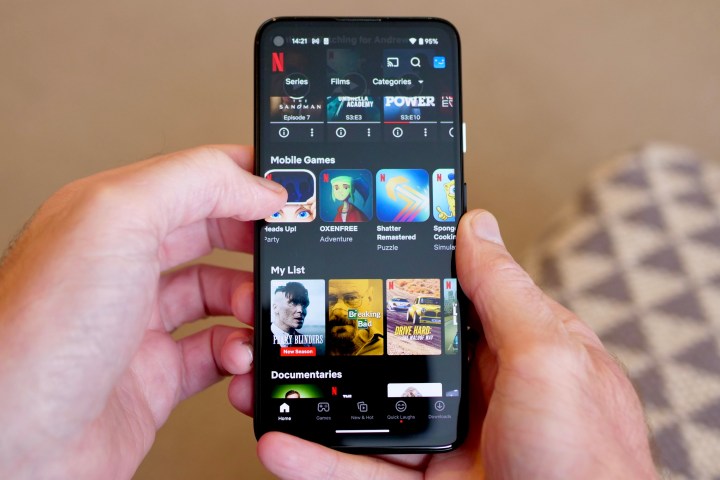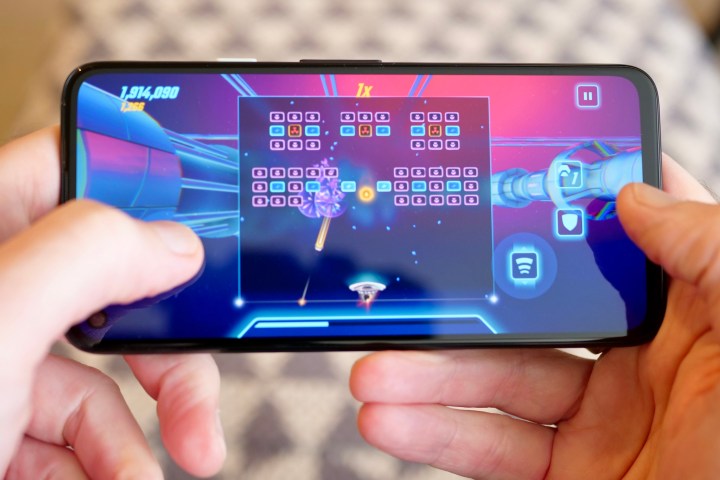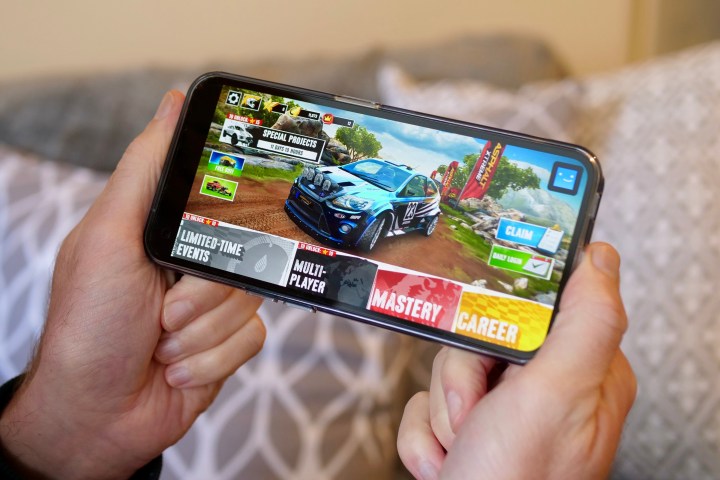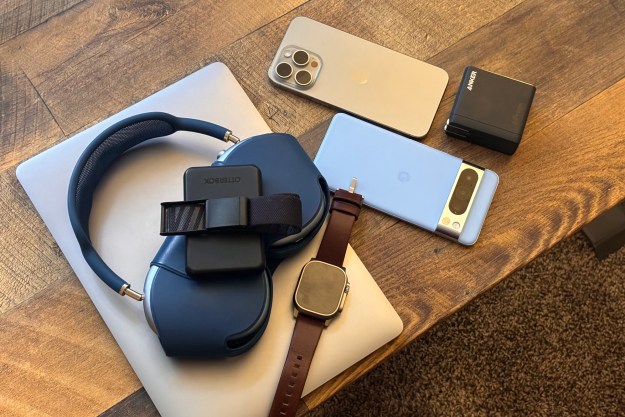Hidden among Netflix’s endless main menu, where you usually scroll through its extensive list of shows — unable to decide what to watch — you may have stumbled across a section labeled “Mobile Games.” Yes, a small library of games is also included with your Netflix subscription, and despite being around since the end of 2021, not everyone may have given them a go yet.
But are they streaming games, like the now-dead Google Stadia service? Or is this something different, and do you need one of the best smartphones to play them? We’ve investigated to find out.
How Netflix Games works

Before we try Netflix Games out on some smartphones, it’s worth talking about how it works. This isn’t like Google Stadia, where games are streamed to your device without the need to install anything, despite Netflix being best known for streaming. Instead, when you choose one of the games listed in the Netflix app, it transports you to your phone’s app store to download the game itself.
This means that the game you want to play is permanently installed on your phone, so make sure you’re not tight on storage space before committing. The games install as normal, but rather than signing in with Google Play Games or Apple’s Game Center, you sign into the game with your Netflix credentials. These are exclusive titles, and you can’t play them unless you have a Netflix subscription.
Signing in happens automatically, and an added benefit is all your game data is saved online and synced across devices; if you play on your phone, your tablet, or your TV, you don’t lose any progress. It’s also cross-platform, so you can start on an Android phone and continue on your iPad with all your game data intact. The final big advantage is the games are truly free to play, with no in-app payments enabled or any requirement to pay out to get better equipment or advance quickly through a game.
The phones we tried

There aren’t really any specific requirements to play the games Netflix offers on your phone, outside of it running either Android 8 or later, or iOS 15 or later. This covers dozens of devices, but is having an old or mid-range smartphone a barrier against trying Netflix Games? To find out, we played on the iPhone 14 Pro, the Nothing Phone 1, and the Google Pixel 4a.
Why these phones? The iPhone 14 Pro is one of the latest devices and has Apple’s new A16 Bionic processor, and should be considered one of the highest-performance smartphones you can buy. The Nothing Phone 1 is also a recent release, but it uses a more modest processor — the Qualcomm Snapdragon 778G+ — which is designed for strong everyday performance and decent gaming too. Finally, the Google Pixel 4a was released in 2020 and uses a Qualcomm Snapdragon 730G processor. It’s representative of many mid-range phones released during that period.
Playing Netflix Games
There’s some good news here, in that across the three smartphones we tried, Netflix games worked without a problem. All opened the correct page in the app store, and each one downloaded without issue. I chose to play Asphalt Xtreme and Shatter Remastered.

Asphalt Xtreme takes up 1.43GB of storage space on Android, while Shatter Remastered is 430MB, giving you an indication of how much free space you’ll need on your phone if you decide to install more than just a couple of titles. The iPhone 14 Pro played both games with absolutely no issue, which shouldn’t come as a surprise.
However, more surprising was the Google Pixel 4a’s willingness to play Asphalt Xtreme, as the Nothing Phone 1 struggled when there was a lot going on, with an obvious frame rate reduction noticeable when the game was at its busiest. This had the unfortunate effect of, at times, making the game quite difficult to play. However, all three phones played Shatter Remastered perfectly.
Forget your phone, just play
Seeing as Netflix Games just leads you to the installation of a game from the app store, there are very few technical differences between the service and downloading any other “normal” game. However, the differences that are there are positive and very welcome. Most notably, both these games felt like titles you’d normally either pay for or have to deal with numerous in-app purchases to play. Instead, you play through without interruption, or a need to reach for your credit card.
The further bonus is it doesn’t seem to matter what phone you have. Provided you have the Netflix app installed (and a vaguely modern phone that can play games already available in either the Google Play Store or Apple App Store), you’ll be able to download, install, and play the exclusive titles available through Netflix Games.
There are currently more than 30 games to download and play, we single out the best Netflix Games titles here, and also guide you through playing them on your TV here. It’s a great addition to your Netflix subscription, with hours of potential gaming fun if you find a few titles you enjoy.
Editors' Recommendations
- 5 phones you should buy instead of the iPhone 15 Pro Max
- 5 phones you should buy instead of the iPhone 15 Pro
- No, the Journal app on your iPhone isn’t spying on you
- You won’t believe how I improved my phone’s battery life
- Apple is updating one of the oldest apps on your iPhone




